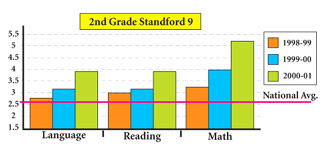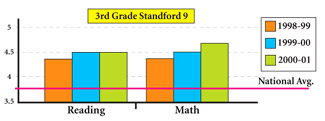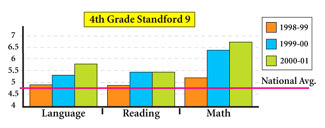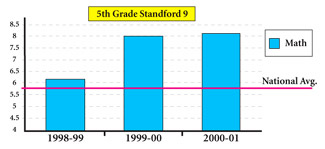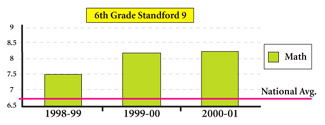Kagan's Articles - FREE Kagan Articles
Research & Rationale
Achievement Still on the Rise At Catalina Ventura School
Scott Heusman & Don Moenich To cite this article: Heusman, S. & Moenich, D. Achievement Still on the Rise at Catalina Ventura School. San Clemente, CA: Kagan Publishing. Kagan Online Magazine, Summer 2003. www.KaganOnline.com
In the Fall of 2000, we ran an article in this online magazine, titled Kagan Structures Increase Achievement at Catalina Ventura School. The article illustrated impressive gains at Catalina Ventura with the implementation of Kagan Structures. Almost three years, Catalina is not only sustaining the initial gains, they are continuing to improve their scores on standardized tests. What follows is a letter from Scott Heusman, principal of Catalina Ventura briefly describing his use of Kagan Structures and the impact they have at his school. Plus, Don Moenich shares graphs of Catalina's Stanford Nine scores. (For the original article on Catalina Ventura, visit the research section of Kagan's Website: www.KaganOnline.com/Research)
The following graphs are some of the highlights of last years Stanford Nine Achievement Test results. As you can see, Catalina Ventura School scored well above the national average. As poverty continues to increase in our community (72% free and reduced lunch), test scores are also increasing. In the 1998-99 school year, Catalina teachers began using Kagan Structures in their classroom to get students actively involved in learning and to make learning fun. Since then, teachers have worked diligently to increase the number of Kagan Structures used in their classroom. As a result, test scores have significantly improved. Additionally, the social skill training and benefits that accompany the implementation of cooperative structures are great. Teachers report that their students are better listeners, more patient with classmates, and genuinely care about the learning of other classmates after using cooperative structures in their classroom. Don Moenich |
||

